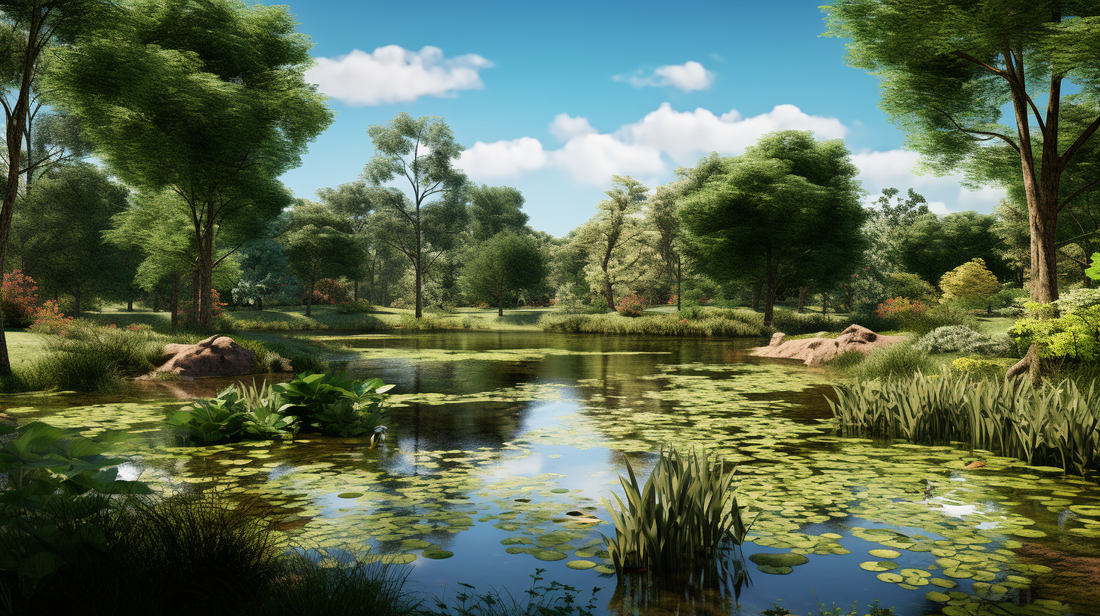At first, draining your garden or koi pond can sound like a daunting challenge. However, draining a pond is a simple task that can be accomplished using a few different methods. The way in which you should drain your pond will be dictated on how the pond is situated and the tools you have available.
Most small backyard ponds can be emptied in less than a couple hours, some even quicker. No matter your pond size or current situation, this article delves into all the techniques and tools you’ll need to accomplish the job.
How often should you drain a pond?
The regularity with which you should drain your pond will be predicated on a few different factors, including your pond’s biodiversity, climate, and more. Some ponds require annual maintenance that can only be completed by draining the pond. With that being said, fully draining your pond can come with some hassle – especially if you have fish or other species you are hoping to protect. For this reason, most property owners will fully drain their pond only when it’s absolutely necessary.
Here are a few signs it might be time to drain your pond:
How to Drain a Pond with a Pump
Using a pump for draining pond water is always going to be the simplest and most timely method. For those wondering how to drain a large pond, using a pump or multiple pumps will likely be the only suitable option.
If you don’t yet have a pump, there is no reason to fret. It’s still possible to completely drain your pond without a pump, although it will take a bit more effort. There are a number of good pump options on the market, however a submersible pump is best suited for the job.
Pond emptying via a submersible pump can be accomplished in a few steps:
How to Drain a Pond without a Pump
Wondering how to pump water from a pond without a pump? While using a pump is definitely the easiest and most widely used method, it isn’t the only option at your disposal. If you’ve been hoping to find out how to drain a small pond, often times using a syphon is the best way to get the job done.
Keep in mind that syphoning water isn’t an option for some ponds. Since draining a pond via syphoning depends on gravity, you’ll need to ensure that you can position the outflow hose below the deepest point in the pond.
Syphoning water can be done with any kind of hose, although the job is best completed with a manual hand pump. This way, you don’t actually have to “suck” any of the water through physically.
Here’s how to drain a small pond by syphoning the water out:
- Gather materials – in addition to a good hose, have your hand pump ready if possible.
- Position one end of the hose at the lowest point in the pond.
- Position the other end of the hose at your drainage point. Remember, the outflow end must be at a lower position than the bottom of the pond.
- Apply just enough suction to the outflow end of the hose that the water begins to syphon through.
- Watch the force of gravity do the rest of the work for you!
How to Refill a Pond after Draining
If you have plants or fish to support in your pond, there are a few things you might want to consider when refilling. The biggest thing is to treat the water with some sort of water softener. If you use tap-water or garden-hose water to refill your pond, a water softener is key to neutralize the effects of heavy metals and other minerals in the water. Toxins such as chlorine, ammonia, and chloramine can impact the nutrients in your pond water and hurt any fish or other pond organisms that may be present.
When a pond is drained, all the bad bacteria is drained with it. However, the “good bacteria” also known as aerobic bacteria gets drained as well. For this reason, it’s always a good idea to add back in the good bacteria when refilling the pond. There are more than a few “beneficial bacteria” pond treatment products on the market that should help to restore the right bacterial balance in your pond.
Final Thoughts on Draining or Emptying a Pond
There is no denying the hassle that comes with draining a pond. Even if you have all the equipment ready to go, there is still the setup and cleanup to consider. While it can be a challenge to drain a pond, it’s more than possible with the right equipment and information.
Furthermore, draining your pond and starting fresh can be quite beneficial to any plants, fish, and other organisms calling the pondwater home. Once the hassle has finally been completed, you can rest assured that your pond’s ecosystem will be in a healthier place than ever before.
